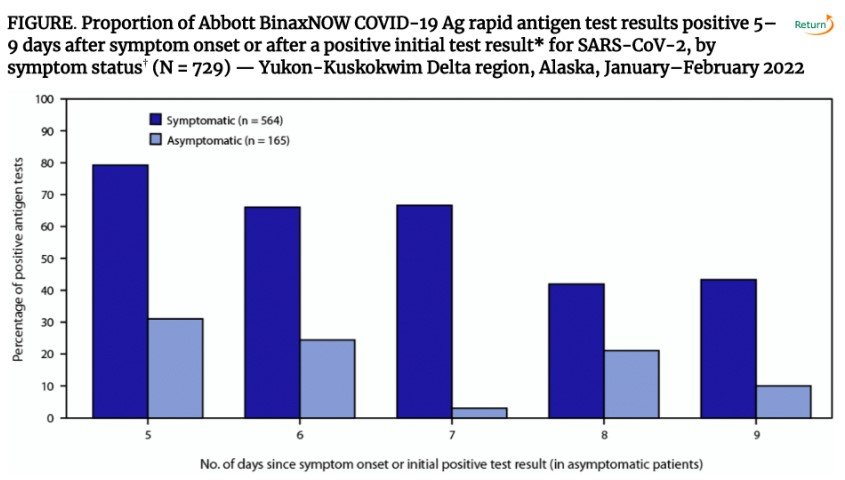Wow, I finally found an answer to a question I have had for months: are antigen tests REALLY a good measure of infectiousness? We know that a negative antigen test is poor at accurately telling if you have covid-19 (false negatives about a third of the time), but what really counts for covid-free group gatherings is not if people have some level of the disease, but are they CONTAGIOUS TODAY?
I found one study (from March 2022) that concluded they are EXCELLENT at this. It said "Interestingly, SARS-CoV-2 contagiousness is highly unlikely with a negative antigen test since it exhibited a negative predictive value of 99.9% compared to viral culture. … Thus, screening people with antigen testing is a good approach to prevent SARS-CoV-2 contagion …"
I think this means that if you do a proper job with a single antigen test, and get a negative result, this DOES reliably say that you are almost certainly not infectious to others. Therefore, the number of contagious people at a gathering apparently can be reduced to near zero if everyone does an antigen test upon or just prior to arrival.
Of course, this is not quite perfect, as in the morning someone could be in the beginning stages of a covid-19 infection, with their virus load increasing but just below the threshold for being significantly infectious, and by the end of the day could be testing positive and starting to be contagious.
But that small level of risk can be easily managed by proper levels of fresh air ventilation and, if needed, supplemental air purification, both of which I expect will scrub the virus out of the air as fast as it’s being introduced by only a very small percentage of people.
I don’t understand why this news has not been "trumpeted from the treetops”! Am I missing something here? So I had an email exchange with the corresponding author of the study. Here’s what he said:
From: Wbeimar Aguilar <wbeimar.aguilar@udea.edu.co>
Subject: Re: antigen test study
Date: August 4, 2022 at 9:17:57 AM EDT
Dear Roy
I totally agree with you and the blog contents you plan to share.
Our conclusion is wordy to be scientifically precise, but it is true; the simple interpretation of the
conclusion is just a negative antigen test = not contagious.
Regards, Wbeimar
Wbeimar Aguilar Jiménez
Biologist, MSc, PhD in Biomedical Sciences
Grupo Inmunovirología
Sede de Investigación Universitaria
Universidad de Antioquia
Medellín-Colombia
Here is the link to his group’s study: https://journals.asm.org/doi/10.1128/spectrum.01962-21
[The information contained in this article is for educational and informational purposes only and is not intended as health or medical advice. Always consult a physician or other qualified health provider regarding any questions you may have about a medical condition or health objectives.]
NOW YOU CAN SEARCH THIS BLOG!
We have added a “search” bar for this blog - scroll all the way down
to the very bottom of a blog page to find the search bar.
We invite you to subscribe to our Newsletter - the cost is free
and each new post comes to your email every
two weeks on Thursdays!
To subscribe, simply email safetulator@kohlerandlewis.com
with your name and email address and we will sign you up.
Highlights From Past Blogs
June 30 - Summer Gatherings Can Be Safer
June 22 - Summer Gatherings Can Be Safer
May 31 - Covid Myth-Busting
April 29 - The Big Meter
April 19 - The Spring Surge Is Here
April 7 - How to Test
March 21 - The Origin of the CDC’s Biggest Mistake
February 25 - One. Million. Deaths.
February 16 - Ventilation Revolution
January 11 - Air Purifiers
January 4 - Masks That Actually Work
December 15 - The Double Risk of Indoor Dining








